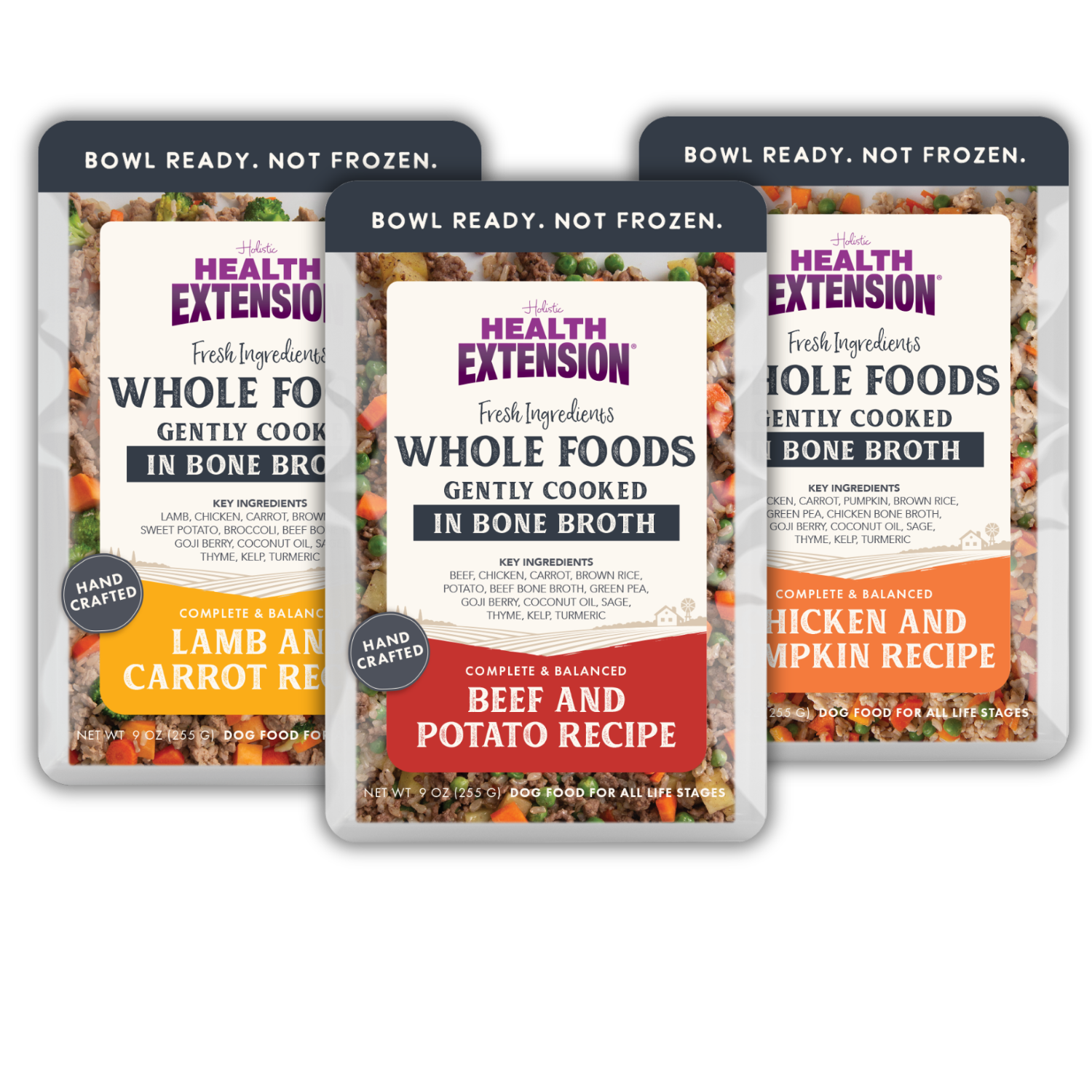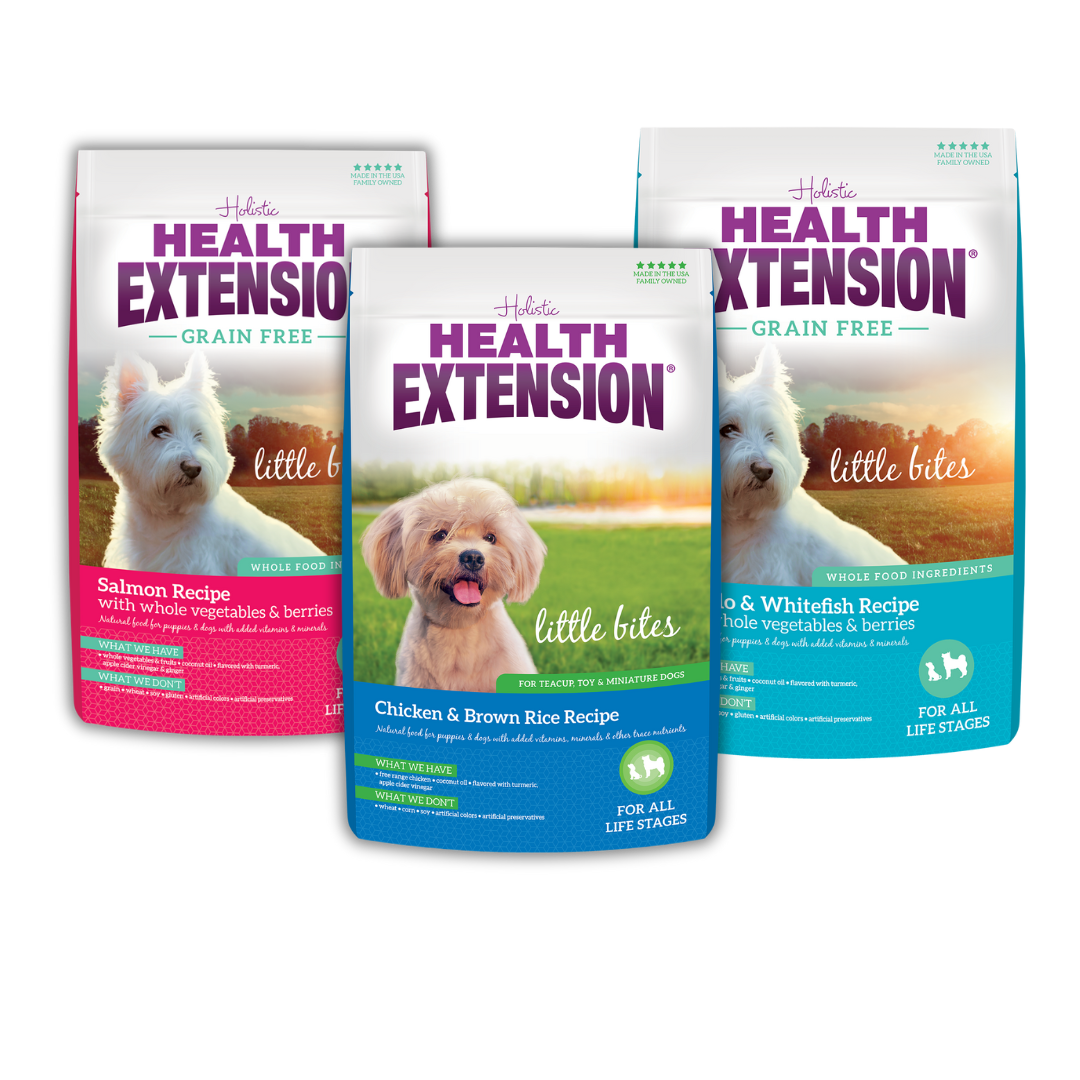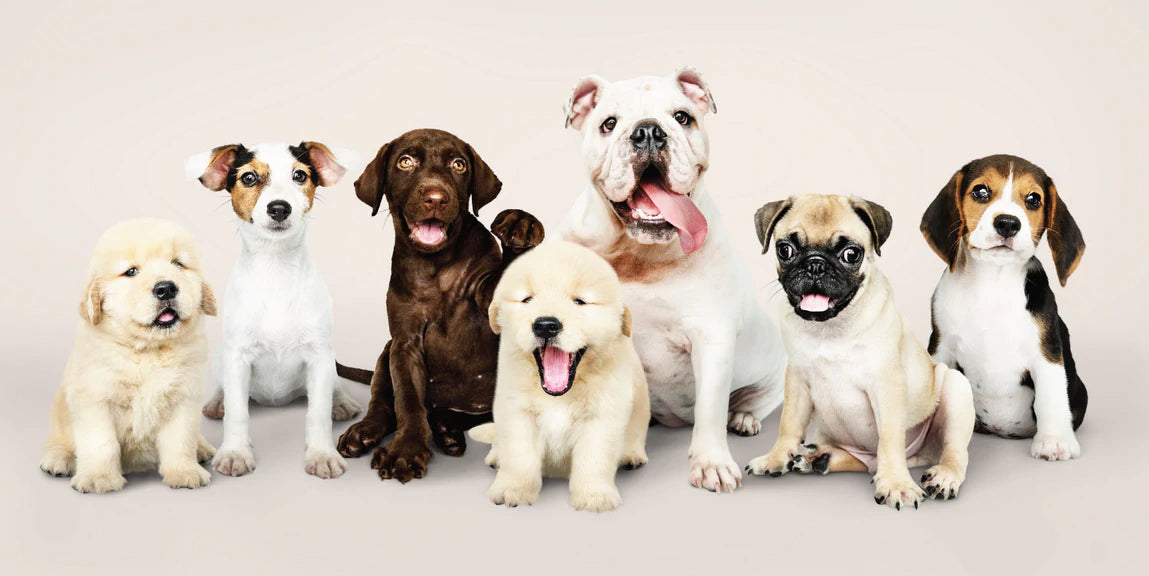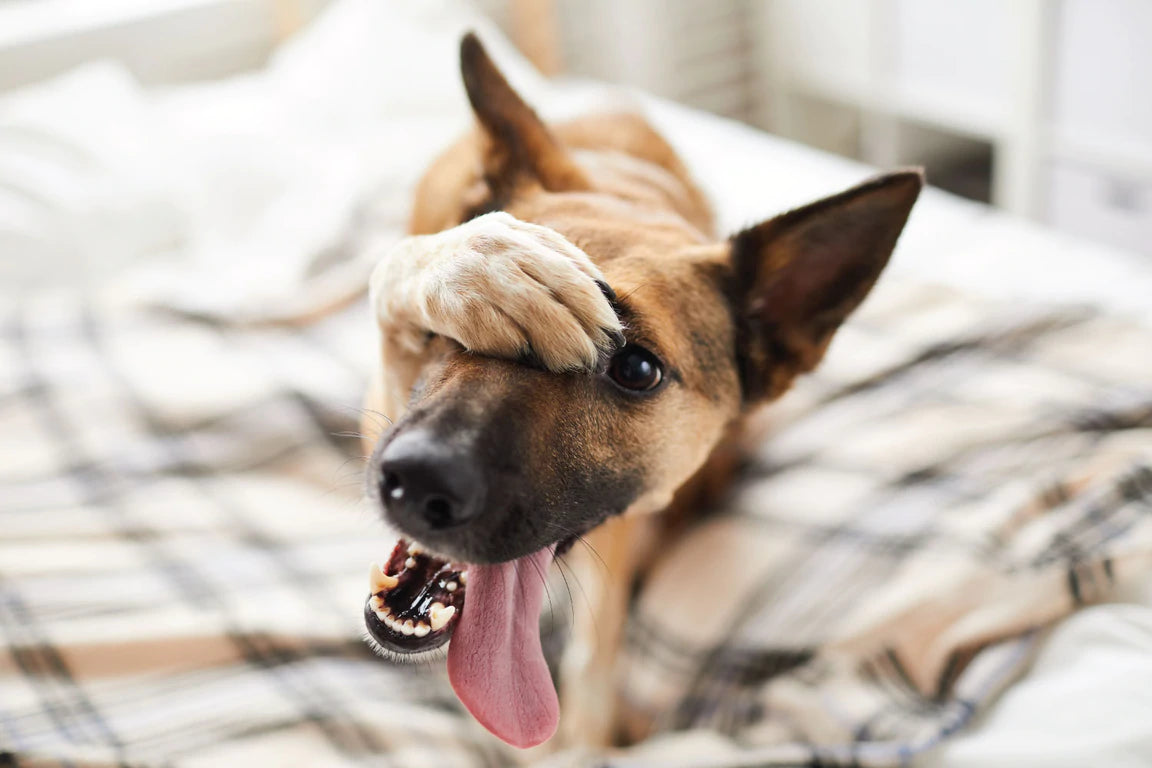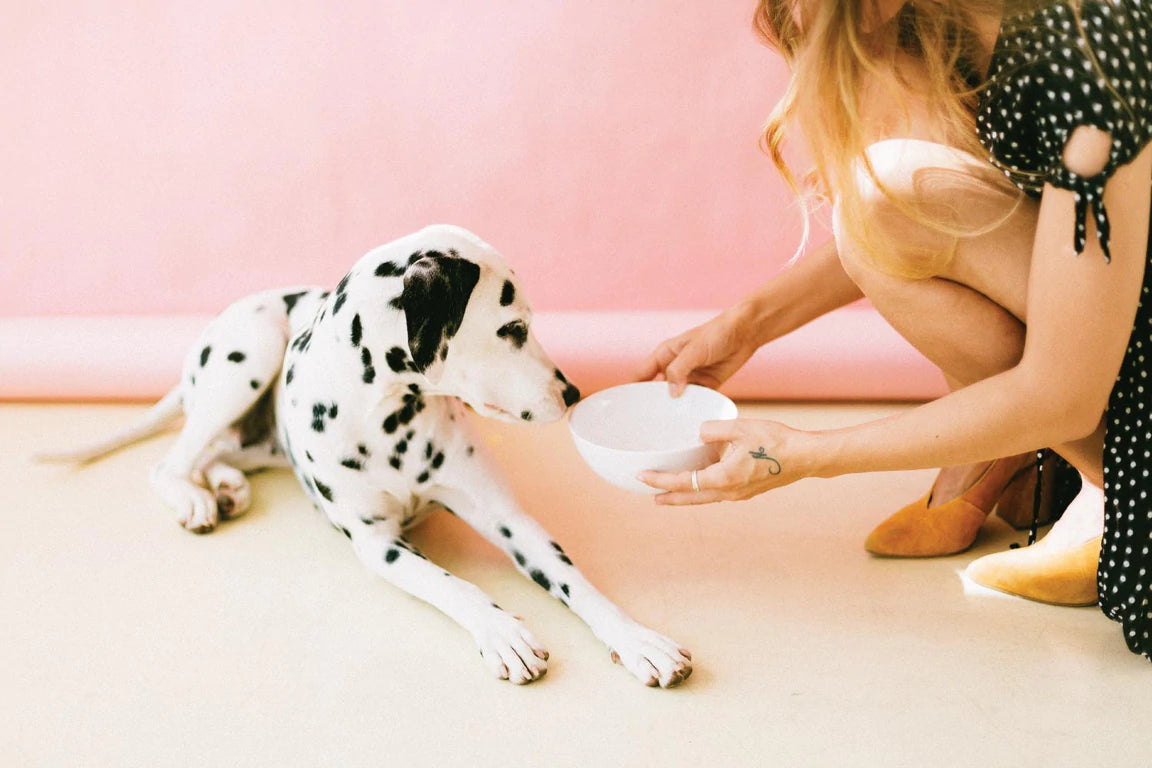From your friends at Health Extension
You’ve just brought your new puppy home, and especially if this is your first fur child, you may have a lot of questions! At Health Extension, we know how important it is for you to give your dog the best care possible from day one. That’s why we have outlined a comprehensive list of to-do’s for setting up your pet – and your home – for a lifetime of love and happiness.
Let’s start with the basics . . .
Food
Of course, we believe the very best thing you can do for your puppy is to feed them the very best food from the start. We’re passionate about nutrition, and the importance of feeding your puppy all-natural, wholesome ingredients, that work in synchrony with your dog’s digestive system and offer them the most bio-available nutrition possible. Take a few moments to research what ingredients are best for your dog’s unique breed as well as portion tips for varying ages. Then, head on over to our marketplace to choose from a variety of foods best fit for your fur baby [Click to Visit]. To learn more about our ingredients, and how they help your pet live a healthier, more vitalized life, visit this page.
Food & Water Bowls
The newest member of the family will need a very special set of serving dishes just for their daily meals! We like to use stainless steel sets as they’re easy to sterilize. And did you know? A dog’s bowl should actually be sterilized every day – even if they have a dry food-based diet! It’s not hard to believe, but your canine is susceptible to germs and bacteria lurking around their food and water bowl. And even though their system is well apt to deal with an influx of germs, it’s best to wash their bowl(s) daily. You can wait until the end of the day if they nosh on dry food. Be sure to purchase a collection of plates and bowls to keep up with the rotation!
Leash, Collar & Nametag
Your dog will need these necessary accessories! The best choice for your puppy is going to be based on the dog’s size and breed. Small breed dogs will do well with a harness while larger dogs will be fine starting off with a more traditional collar. A simple Google search will help yield the right answer, and your local pet store should have a specialist on hand to help answer these questions as well. Make sure to pick up a dog tag, or have one made, with your pet’s name and phone number clearly visible – just in case!
Microchipping
There is nothing more terrifying than losing a pet – even if for just a few minutes or hours. One of the more recent advancements in pet care has been the employment of microchip readers, which contain your dog’s unique serial number, tracking them back to you – their loving owner. If your dog has not already been microchipped, consider getting this procedure done for your pup, which is nothing more than a simple injection, not unlike any other shot they may receive. The cost is minimal, about $50 typically to have it done by your vet, and the information can be registered nationally online: https://www.acainfo.com
Crate for Training
All new puppies should have a crate that’s used to both help them train as well as a space for them to sleep at night. Your puppy is new to your home (and the world), and many dogs need to be trained to live in harmony within your home as they grow. Training them to enjoy their crate is the perfect way to help keep them out of trouble when you’re gone, and even give them a special place just for them to feel safe in and relax. Be mindful of the size of the crate you purchase for your puppy. It should be just large enough for them to stand up in and turn around in order to provide a cozy space for them to relax and sleep at night. Of course, as your puppy grows, so will the need to expand the size of their crate. Consider purchasing a crate that is expandable – and can grow with your puppy – potentially into adulthood. Having a crate from day one, which you use for training, is an important way to begin the overall training process. PRO TIP: Keep a nightlight on with some soft music to help your puppy sleep better at night.
Training Treats
If you plan on training your new puppy in any capacity, even if just rewarding them for potty training, you will need a reinforcement system. Most owners defer to treats as their pets reward. You should have a variety of treats on hand – each with a different level of excitement for your dog that matches the nutritional excellence of the food you’re feeding.
To shop our selection of all-natural dog treats, visit this page.
Gate or Play Pen
Gates are great at helping contain your new puppy, should you want to avoid them snooping around the house in places they should not be, or to prevent them from climbing up or down stairs. If your home is not suitable for a gate, consider a puppy play pen, which acts as a space large enough for them to play in (much larger than a crate) while preventing them from roaming freely.
Dog Bed
This space will be a comfort zone for your new puppy, and perhaps something they even use into adulthood. You’ll want to consider (as always) the size of your puppy, and what their expected size in adulthood will be. Of course, you can always have a temporary bed and swap it out for a more appropriate size when needed. We love options that are washable, as a puppy’s bed seems to need a good cleaning every few days, or weeks! Other options with removable inserts are helpful as well and can easily be tossed into the wash.
Blankets
Puppies (and dogs) can be a lot like babies! They love toys, playing, cuddling and loving. They also love to cozy up into plush pillows and blankets. You’ll want to have a blanket or two on hand for your puppy as they arrive home to give them a warm, comfortable setup to cuddle into. Remember that puppies do have accidents, and pretty quickly can get into teething. So having several blankets on hand, specifically for them, is a good insurance policy in the beginning!
A Variety of Toys
Plush toys and an assortment of multi textured toys are great for your new puppy. Not only do toys keep them engaged, but they’re also excellent to help get them through the teething stage. Knowing which is best for your pup will require some trial and error, so we recommend purchasing a small variety to start with, including squeakers, rubber bones, bully sticks, ropes and plush toys. If you find your pup uninterested in some of the toys, put them away for a while and reintroduce them some weeks or months later, when they may be more inclined to liken to them. You can shop some of our favorite toys here.
Another “toy” to consider is a “ticker toy”, also known as a “heartbeat toy”. These plush toys (or pillows) are designed with an internal ticker to mimic the sound of a beating heart – which experts think helps to soothe your puppy when learning to sleep through the night, as the beating rhythm reminds them of their littermates.
Also, consider purchasing food or treat toys – which are engineered to contain a treat or “piece” of food not easy to access for your puppy. These are excellent for crate training, and overall help with providing mental stimulation and engagement for your puppy.
When your dog gets a bit older, consider purchasing tennis balls and flying disks to play “fetch” with – but make sure to put them away when you’re done! This philosophy goes for all toys in general. Always be mindful of the health of your dog’s toys, and when needed, throw them out to prevent ingestion or injury.
Chew “Treats” for Teething
Chew “treats” will be something your puppy will love and enjoy throughout their whole life. They are an excellent source of entertainment for your dog while also being the perfect solution for teething, dental health, fresh breath and a strong jaw. There is quite a selection to choose form on the market, so consider testing out a few varieties to start with. One of the most popular ingredients is rawhide – which you want to avoid as it is an undigestible leather that can cause gastrointestinal harm to your pet. Look for all-natural and meat-based treats such as antlers, bullsticks and dried jerky meat, to name a few.
You can shop our selection of natural chews here: https://www.myhealthextension.com/collections/treats/chews
To shop our line of dental chews, visit: https://www.myhealthextension.com/collections/treats/Dental
To browse our selection of all-natural jerky recipes, visit:https://www.myhealthextension.com/collections/treats/jerky
Pee Pads
You may or may not opt to train using pee pads, as training outdoors from the very start is the best way to train your puppy to go outside. But families who plan to maintain an indoor tinkle schedule, or those who live in tight quarters – like in a condo or apartment – may find pad training to be the optimal solution for their pet. One way to help attract your puppy to their pee pad is to utilize a specially-formulated pad spray. Ours is engineered with all-natural ingredients to preserve an optimally healthful environment for your pet. To shop our Housebreaking Aid spray, visit this page.
Elimination Bags or Scooper
Depending on how you plan to train your dog to do “number two”, you will need to have one of these options on-hand. For most pet parents, doggie bags are the perfect solution to utilize on walks around the neighborhood. If you plan to poop-train your dog in your own secluded yard, then a pooper-scooper might be a more sustainable solution instead of keeping an inventory of bags on hand. Either way, DO have a stash of baggies that you can use to pick up waste for when you are outside of your home, like at the dog park or while traveling.
Anti-Chew Spray
Help prevent your new puppy from eating your much-loved shoes or expensive furniture by investing in an anti-chew spray. The unique ingredients infused in these products will help deter the newest member of the family from targeting things like table legs, pillows, leather goods and more. We’re especially careful about the products we formulate at Health Extension, and only offer products that are formulated with all-natural ingredients. Our selection of pet deterrent solutions are infused with essential oils including cinnamon, citronella, eucalyptus, lemongrass, tea tree, cloverleaf, sage, fennel, ginger and more! That means, not only is it safe for your dog, it’s also satisfying to have in your home! To shop this range of anti-chew products, visit this page.
Stain & Odor Remover
Your new puppy will invariably have some accidents along the way while you train them on proper elimination times and techniques. Our collection of pet stain and pet odor removing products are the ideal formulas to help clean, de-odorize and prevent repeat-staining by your pet. Plus, we use a special blend of enzymes not found in household cleaners to prevent your pet from returning to the same spot (you may no longer smell it, but they can!). Using a combination of 100% all-natural ingredients, our pet cleaning products are among the best and purest formulations on the market. To shop our selection of pet cleaning products, visit this page.
Shampoo
A dog’s skin is actually more delicate than you might think, so investing in a special formula made just for them will do wonders for their overall health and comfortability. On top of that, dogs (like humans) can have allergic reactions to topical products because of their unique skin makeup. This is why we offer a wide range of pet cleaning and hygiene products, featuring formulations developed to treat specific coat types, different skin types and even specialized “tear-free” shampoo for puppies! To shop our dog spa products, visit this page.
Dog Brush or Comb
Maintaining your dog’s coat is important no matter what type you have, but more care and attention may have to be given depending on their specific breed. For long-haired dogs, like retrievers and cocker spaniels for instance, using a de-tangling brush will be necessary. These short-wired brushes are known as slicker brushes. A rake bush, alternatively, consists of thinly spaced “pins”, which reach through your dog’s coat and scrape dead skin cells from the surface. This is best used for breeds that have thick coats which shed during the year, such as German shepherds and chow chows. A bristle brush is best for smooth-coat breeds, such as pugs and Boston terriers. The bristles on these brushes are meant to remove loose hairs and stimulate the skin’s surface. Finally, pin brushes, which look a lot like human brushes, but with round plastic ends affixed to wire bases, are used to provide normal grooming for your pet. They are not as effective at targeting dead skin, but can help release loose hairs while providing soothing enjoyment for your pet.
Toothbrush and Toothpaste
The health of your dog’s teeth is no less important than the health of your own. We suggest purchasing a toothbrush, toothpaste or even scrubbing cloths for your pup within the first few weeks of their arrival. Introducing them early on to these sometimes “annoying” hygiene techniques may make them more apt to undergo the treatment on a regular basis.
Nail Clipper
Getting your puppy accustomed to having their nails clipped is an important habit to create, though they may not appreciate it. Many people opt to have their groomer or veterinarian do it, but it’s great to practice this at home by holding your pet’s paw in one hand and tapping the nails with a metal spoon in the other.
Ear Cleaner
Many breeds are susceptible to dirt and bacteria buildup. If your puppy has floppy ears especially, you should consider purchasing an ear cleaner or ear cleaner system for them. Cleaning their ears as prescribed will help prevent the propensity for ear infections for high-risk breeds. Also, be mindful about moisture buildup. Dogs who like to swim or who are in moisture-rich environments may require more care and attention to their ear health.
Flea, Tick & Heartworm Medication
When visiting your vet, make sure to inquire about these 3 medications. They will also alert you to a vaccination schedule, and other possible shots that your new puppy may need in the ensuing weeks, months and years. Be especially diligent about your pet’s medication schedule if you expect to play a lot with other dogs or at puppy parks, which can increase their exposure to germs and disease.
Pet Insurance
Pet insurance is a personal choice depending on your family’s unique situation. As with all insurance, it’s a balance between paying in advance for protection versus paying for services on an a la carte basis, if or when an issue with your pet arises. There is no right answer, as some pets remain healthy and illness-free for a lifetime, while others may struggle with ongoing ailments.
We’re passionate about vitamins and supplementation as well – which are especially great for breeds who are susceptible to joint-related issues, allergies or certain musculoskeletal problems. We encourage those who are interested to get their pet on a regular vitamin schedule during puppyhood. Doing this is the best way to be proactive and preventative against issues that may develop in time. Not only are you helping prevent your pet from developing breed-related issues, but you’re also saving yourself trips to the doctor. To shop our range of pet vitamins and supplements, visit this page.
As with all things, being informed from the very start will help guide the decision making process for the health of your pet. If your pets breed is prone to genetic problems or a high-rate of illness, it’s worth considering picking up insurance early on instead of having to make hard choices later down the line. What we can say for sure though at Health Extension is that feeding your new puppy high-quality ingredients from the very start, and starting them on daily vitamins, will enable them to have the most optimal chance at a healthy life. To read about our pledge, visit this page.

